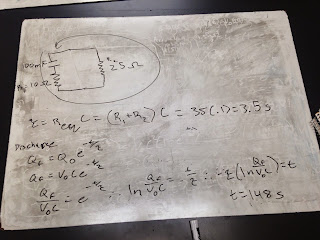| In this experiment, we saw that connecting the capacitor and light bulb in series like this would temporarily light the bulb. Eventually, the capacitor would not be able to hold any more charge, the current would stop, effectively turning off the light. Then we would take the battery out of the circuit and see the the light glow again. In this discharging process, charge would flow from one end of the capacitor, through the wire and the bulb, onto the other side of the capacitor. Eventually the light would turn off as well. |









No comments:
Post a Comment